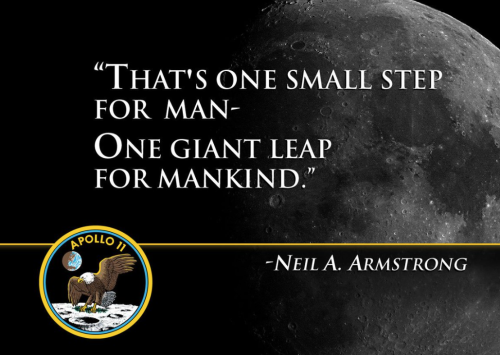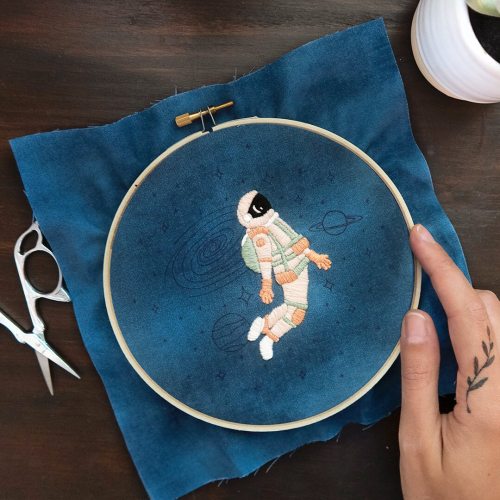How The Media Depicts The Apollo 11 Mission:
How the media depicts the Apollo 11 mission:

Actual quotes from the Apollo 11 mission:





More Posts from Nauticastro and Others





Astronomy 🪐 🔭

Australia vs Pluto
via reddit

Long Tail of Comet Pons-Brooks ©
cool…
this morning NASA abandoned their mars rover Opportunity (aka Oppy) because it (she) got hit by a storm on Mars and it knocked her camera and wheels out and her last words to the team were “my battery is low and it is getting cold”. I know she’s a machine but I’m devastated. Oppy is the one who discovered water on Mars. RIP oppy ily space baby
“Gretchen: On the International Space Station, you have astronauts from the US and from other English speaking countries and you have cosmonauts from Russia. And obviously it’s very important to get your communication right if you’re on a tiny metal box circling the Earth or going somewhere. You don’t want to have a miscommunication there because you could end up floating in space in the wrong way. And so one of the things that they do on the ISS – so first of all every astronaut and cosmonaut needs to be bilingual in English and Russian because those are the languages of space. Lauren: Yep. Wait, the language of space are English and Russian? I’m sorry, I just said ‘yep’ and I didn’t really think about it, so that’s a fact is it? Gretchen: I mean, pretty much, yeah, if you go on astronaut training recruitment forums, which I have gone on to research this episode… Lauren: You’re got to have a backup job, Gretchen. Gretchen: I don’t think I’m going to become an astronaut, but I would like to do astronaut linguistics. And one of the things these forums say, is, you need to know stuff about math and engineering and, like, how to fly planes and so on. But they also say, you either have to arrive knowing English and Russian or they put you through an intensive language training course. But then when they’re up in space, one of the things that they do is have the English native speakers speak Russian and the Russian speakers speak English. Because the idea is, if you speak your native language, maybe you’re speaking too fast or maybe you’re not sure if the other person’s really understanding you. Whereas if you both speak the language you’re not as fluent in, then you arrive at a level where where people can be sure that the other person’s understanding. And by now, there’s kind of this hybrid English-Russian language that’s developed. Not a full-fledged language but kind of a- Lauren: Space Creole! Gretchen: Yeah, a Space Pidgin that the astronauts use to speak with each other! I don’t know if anyone’s written a grammar of it, but I really want to see a grammar of Space Pidgin.”
— Excerpt from Episode 1 of Lingthusiasm: Speaking a single language won’t bring about world peace. Listen to the full episode, read the transcript, or check out the show notes. (via lingthusiasm)

From Earthrise to the black hole: astronomy’s most famous images.
Photographs from history that capture humanity’s exploration of the heavens.

20 July 1969
One of the most iconic views of Earth, taken from the Apollo 11 spacecraft as it orbited the moon. Describing the scene, the astronaut Neil Armstrong said: ‘It suddenly struck me that that tiny pea, pretty and blue, was the Earth. I put up my thumb and shut one eye, and my thumb blotted out the planet Earth. I didn’t feel like a giant. I felt very, very small’ | This caption was updated on 11 April 2019 to correct the date the picture was taken, photograph: Nasa.

21 July 1969
Buzz Aldrin, the lunar module pilot for the first moon landing, poses on the lunar surface. The footprints of the astronauts are clearly visible in the soil. Neil Armstrong took the picture with a 70mm Hasselblad lunar surface camera Photograph: American Photo Archive/Alamy

25 February 1979
This dramatic view of Jupiter’s great red spot and its surroundings was obtained by the Voyager 1 space probe
Photograph: JPL/Nasa/UIG/Getty Images

14 February 1990
Often referred to as ‘the pale blue dot’ image, this picture was taken when Voyager 1 was 4bn miles (6.4bn km) from Earth and 32 degrees above the ecliptic plane. Earth is a mere point of light, just 0.12 pixels in size when viewed from that distance. The fuzzy light is scattered sunlight because Earth was close to the sun (from the perspective of Voyager)
Photograph: JPL/Nasa

6 January 2004
The first colour image of Mars taken by the panoramic camera on the Mars Exploration Rover Spirit. It was the sharpest photograph ever taken on the surface of the planet
Photograph: JPL/Nasa/AP

25 September 2012
Called the eXtreme Deep Field, or XDF, this photo was assembled by combining 10 years of Hubble space telescope photographs taken of a patch of sky at the centre of the original Hubble Ultra Deep Field. By collecting faint light over many hours of observation, the telescope revealed thousands of galaxies, both nearby and very distant, making it the deepest image of the universe ever taken at that time
Photograph: Hubble space telescope/Nasa/ESA

24 July 2015
A combination of images captured by the New Horizons space probe, with enhanced colours to show differences in the composition and texture of Pluto’s surface
Photograph: AP

10 April 2019
The first image of a black hole, captured by the Event Horizon telescope (EHT) – a planet-scale array of eight ground-based radio telescopes forged through international collaboration. The shadow of a black hole seen here is the closest we can come to an image of the black hole itself, a completely dark object from which light cannot escape
Photograph: EHT Collaboration/UCL
How the media depicts the Apollo 11 mission:

Actual quotes from the Apollo 11 mission:










Astronaut Outer Space Embroidery Pattern
Emily June Handmade on Etsy

Sun Center, Ingo Swann, 1975
-
 pharaohleap reblogged this · 1 week ago
pharaohleap reblogged this · 1 week ago -
 silly-fanta liked this · 1 week ago
silly-fanta liked this · 1 week ago -
 bakudancoco liked this · 2 weeks ago
bakudancoco liked this · 2 weeks ago -
 novelty-pineapple reblogged this · 2 weeks ago
novelty-pineapple reblogged this · 2 weeks ago -
 until-the-end-comes liked this · 2 weeks ago
until-the-end-comes liked this · 2 weeks ago -
 thriveonanonymity reblogged this · 2 weeks ago
thriveonanonymity reblogged this · 2 weeks ago -
 thriveonanonymity liked this · 2 weeks ago
thriveonanonymity liked this · 2 weeks ago -
 starsonthecupcake liked this · 2 weeks ago
starsonthecupcake liked this · 2 weeks ago -
 spacemantis reblogged this · 2 weeks ago
spacemantis reblogged this · 2 weeks ago -
 iamnotactuallyalive reblogged this · 2 weeks ago
iamnotactuallyalive reblogged this · 2 weeks ago -
 umbreonwolfy reblogged this · 2 weeks ago
umbreonwolfy reblogged this · 2 weeks ago -
 umbreonwolfy liked this · 2 weeks ago
umbreonwolfy liked this · 2 weeks ago -
 uke-zone liked this · 2 weeks ago
uke-zone liked this · 2 weeks ago -
 amitybrightlights liked this · 2 weeks ago
amitybrightlights liked this · 2 weeks ago -
 brightclaws5tudios reblogged this · 3 weeks ago
brightclaws5tudios reblogged this · 3 weeks ago -
 brightclaws5tudios liked this · 3 weeks ago
brightclaws5tudios liked this · 3 weeks ago -
 mystarryeyesareblinding reblogged this · 3 weeks ago
mystarryeyesareblinding reblogged this · 3 weeks ago -
 pratiquecompte liked this · 3 weeks ago
pratiquecompte liked this · 3 weeks ago -
 hello-leeanne123 reblogged this · 3 weeks ago
hello-leeanne123 reblogged this · 3 weeks ago -
 pyroglycerinecreampufff reblogged this · 3 weeks ago
pyroglycerinecreampufff reblogged this · 3 weeks ago -
 cormorantgospel liked this · 3 weeks ago
cormorantgospel liked this · 3 weeks ago -
 atsa-quotes reblogged this · 3 weeks ago
atsa-quotes reblogged this · 3 weeks ago -
 ithinktoomuch4438 reblogged this · 3 weeks ago
ithinktoomuch4438 reblogged this · 3 weeks ago -
 qkmlh liked this · 3 weeks ago
qkmlh liked this · 3 weeks ago -
 ghastly-ghostly-stars liked this · 3 weeks ago
ghastly-ghostly-stars liked this · 3 weeks ago -
 ghastly-ghostly-stars reblogged this · 3 weeks ago
ghastly-ghostly-stars reblogged this · 3 weeks ago -
 ntmg1 reblogged this · 3 weeks ago
ntmg1 reblogged this · 3 weeks ago -
 zmediaoutlet reblogged this · 3 weeks ago
zmediaoutlet reblogged this · 3 weeks ago -
 freshwaterowl reblogged this · 3 weeks ago
freshwaterowl reblogged this · 3 weeks ago -
 wonderland-or-bust reblogged this · 3 weeks ago
wonderland-or-bust reblogged this · 3 weeks ago -
 adamofrenchy reblogged this · 3 weeks ago
adamofrenchy reblogged this · 3 weeks ago -
 danburyshakes reblogged this · 4 weeks ago
danburyshakes reblogged this · 4 weeks ago -
 lithiumite reblogged this · 4 weeks ago
lithiumite reblogged this · 4 weeks ago -
 ltcaneko reblogged this · 1 month ago
ltcaneko reblogged this · 1 month ago -
 lilwap liked this · 1 month ago
lilwap liked this · 1 month ago -
 yo-it-deylight reblogged this · 1 month ago
yo-it-deylight reblogged this · 1 month ago -
 snail-clops reblogged this · 1 month ago
snail-clops reblogged this · 1 month ago -
 zoomda174 reblogged this · 1 month ago
zoomda174 reblogged this · 1 month ago -
 fairyofsomething reblogged this · 1 month ago
fairyofsomething reblogged this · 1 month ago -
 autumnleafauthor reblogged this · 1 month ago
autumnleafauthor reblogged this · 1 month ago -
 ralkana-janeway reblogged this · 1 month ago
ralkana-janeway reblogged this · 1 month ago -
 a-cheap-kazoo reblogged this · 1 month ago
a-cheap-kazoo reblogged this · 1 month ago -
 grungehoneybee liked this · 1 month ago
grungehoneybee liked this · 1 month ago -
 soldsmoke reblogged this · 1 month ago
soldsmoke reblogged this · 1 month ago -
 afiananvandot reblogged this · 1 month ago
afiananvandot reblogged this · 1 month ago -
 wurraan reblogged this · 1 month ago
wurraan reblogged this · 1 month ago -
 loki-says-bite-cruel-hands reblogged this · 1 month ago
loki-says-bite-cruel-hands reblogged this · 1 month ago -
 butter-cub liked this · 1 month ago
butter-cub liked this · 1 month ago
